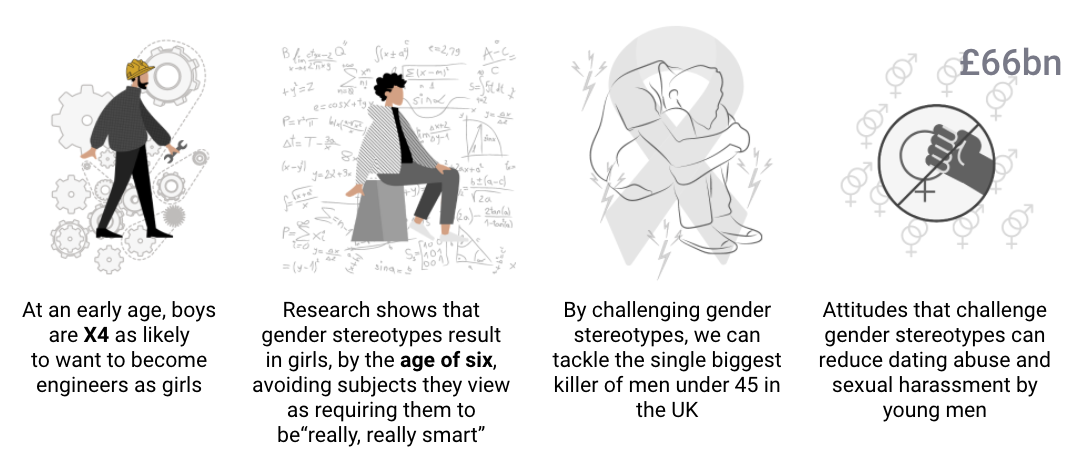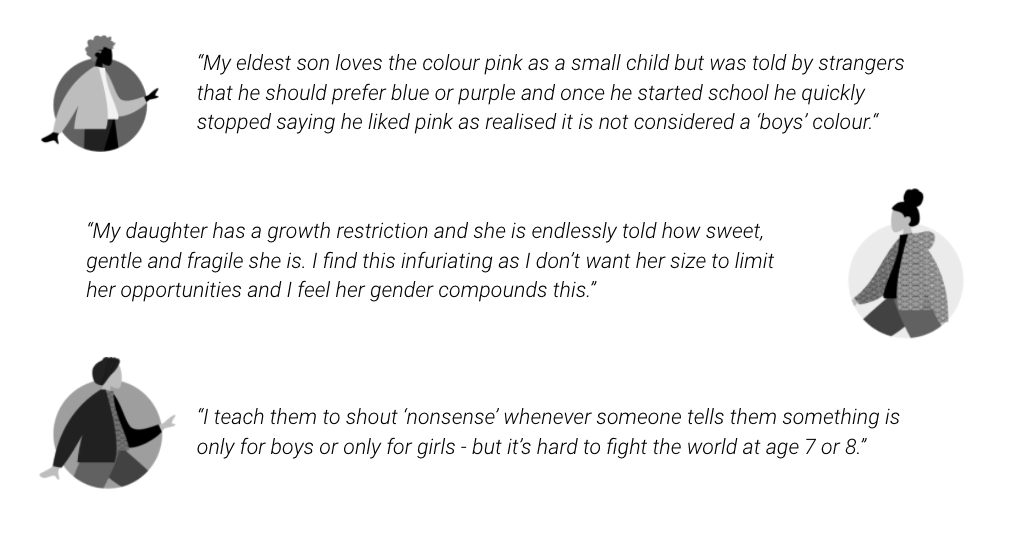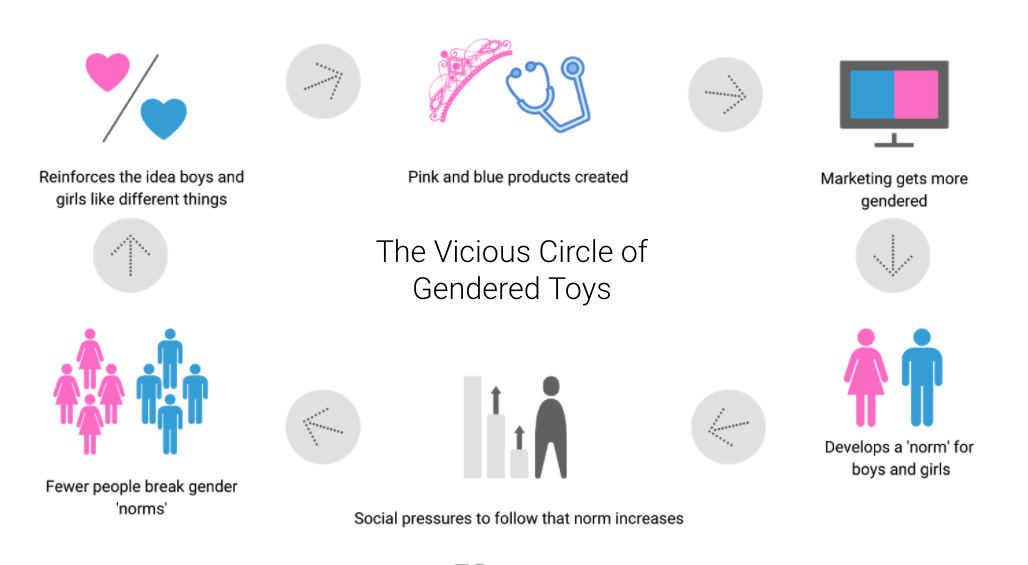We are surrounded by gender stereotypes and biases every day and they can have long lasting effects that we aren’t necessarily aware of.
Specific subjects, roles, behaviours, interests for girls and for boys continue to perpetuate what we see ‘for us’ or not as the case may be. This can lead to all kinds of barriers for life choices and careers, hence why we have such small numbers of women in senior positions or at board level, in the STEM industries and the same for men in caring professions, for example. This is also why, in the workplace, we need to see more smarter working opportunities, parity for parental leave and dad-friendly policies and cultures.
On the face of it, stereotypes may seem insignificant but the impact is BIG. Like microaggressions, it is the consistent cumulative effect of all of these small nudges everyday from society, the barrage of media we absorb, retail, education – the list goes on, it’s everywhere and causes a lot more harm than we may realise.

Statistics taken from Unlimited Potential | Report of the Commission on Gender Stereotypes in Early Childhood
Everyday exposure;
- Television: Only 36% of characters are female and even in animals, monsters, plants and robots there are far lower proportions of that are female.
- Toy catalogues: Boys are nearly four times more likely to be shown playing with cars and girls twice as likely to be shown doing ‘domestic’ play and seven times as likely to be shown in nurturing or caring play.
- TV ads: 29% featuring only boys and 26% featuring only girls. “Boys’” ads were dominated by vehicles, action figures, and weapons, and themes of mastery and conflict; while girls’ emphasised fashion, beauty, and domesticity, with themes around relationships and appearance.
- Clothes: What is on the front of a t-shirt may seem trivial, but research shows that messages in clothing send strong signals to us all about what topics and interests are deemed appropriate for them i.e. Girls; ‘Born to Sparkle’ “Love to Dance’ ‘Dream, Shine, Smile’ vs Boys ‘Adventure is out there’ ‘Bold & Brave ‘Hear Me Roar’
What impact do stereotypes have on our children?
74% of parents say boys and girls are treated differently, and 60% say this has negative impacts.

We need to end the ‘princessification’ of girls and the toxification of boys.
Segregated marketing is a huge problem with clothes, toys, even cards and stationery actively dividing girls and boys. This image shows the vicious circle that keeps us in;

So what can we do about it?
- Reflect on your own unconscious biases
- Role model equality whenever it’s possible for you to do so.
- Encourage children / young people to participate in a range of activities, including those that run counter to gender stereotypes.
- Try to be a conscientious consumer.
- Offer children / young people a wide range of worldviews (i.e. books and tv shows that show alternatives)
- Praise all children equally (i.e. when a boy expresses emotions in healthy ways, take care of their dolls and teddies etc)
- Don’t highlight gender in the way you talk when it’s not relevant (i.e. ‘those children love videogames’)
- Be willing to question assumptions your children make about gender.
- Think about your friends and wider family. (How can you respectfully challenge?)
- Pick your moments to make a difference.
If you’d like to know more about how 50:50 can help you or your organisation be a catalyst for inclusion, contact us: [email protected]